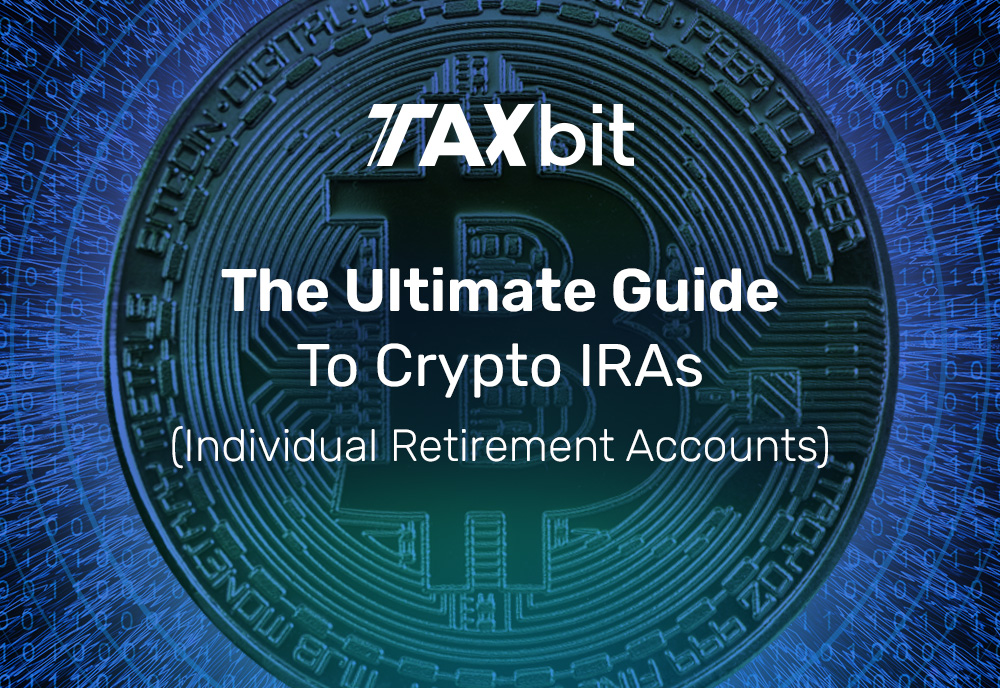The Ultimate Guide to Crypto IRAs
What is a Crypto IRA and how does it work

Published on:

What is a Crypto IRA?
When it comes time to plan for retirement, one of the most common vehicles available is the Individual Retirement Arrangement (IRA), which allows an individual to save and invest for the long term. Almost any type of investment is permissible inside an IRA, including stocks, bonds, mutual funds, annuities, exchange-traded funds (ETFs), etc. Until recently, cryptocurrency has largely been excluded as an IRA investment option.
A recent rise in companies offering Crypto IRAs is helping bridge the gap between traditional finance and digital asset investment, offering individuals the opportunity to include digital assets in their future financial planning.
For those familiar with or interested in cryptocurrency, as well as those who don’t mind taking on some risk now in exchange for potentially larger returns later, opening a Crypto IRA may be worth considering, especially given the potential tax advantages along the way.
What is an Individual Retirement Arrangement (IRA)?
An IRA is an account set up through a bank, investment company, or brokerage that allows an individual to save for retirement with tax-free growth or on a tax-deferred basis. In general, it is similar to a 401(k), which is a retirement savings account obtained by employees as a benefit from their employer. Unlike a 401(k), however, individuals can open an IRA without the involvement of an employer – meaning that anyone with an earned income can open and contribute to an IRA, including those who already have a 401(k) established through an employer.
In general, individuals can contribute to their IRA account each year up to a certain amount based on either their age or, in certain circumstances, their annual compensation. Unless certain exceptions apply (e.g., death, disability, etc.), contributed amounts generally cannot be withdrawn before the participant reaches age 59½ without incurring a tax penalty of 10% of the amount withdrawn. There are two main types of IRA which we will discuss in more detail below – Traditional and Roth. Other less common types of IRA include Simplified Employee Pension (SEP) IRAs and Savings Incentive Match Plan for Employees (SIMPLE) IRAs.
How does a Crypto IRA work?
A Crypto IRA functions like any other IRA – It is simply a retirement account which allows participants to gain exposure to cryptocurrency. In most cases, participants will create an account with a custodian or platform, select an IRA type (e.g., Traditional, Roth, etc.), fund their account, and begin investing with cryptocurrency. Participants face the same standards and tax benefits as they would when investing in any other usual asset class through an IRA.
Note that some Crypto IRA platforms may not allow participants to fund their account with cryptocurrency directly, unless they are completing what is called a “rollover” from an existing Crypto IRA. In other words, participants will generally make contributions using fiat (i.e. cash), and then use that fiat to invest in digital assets within the IRA.
In addition, certain Crypto IRA platforms only allow participants to invest in cryptocurrency as part of their program, whereas others may offer it in addition to any other permitted IRA investments, such as stocks, bonds, ETFs, etc. However, so long as a participant abides by the maximum annual contribution amount holistically, they are free to create multiple IRA accounts with different service providers that offer exposure to different investment types.
What are the benefits and risks of a Crypto IRA?
Including its decentralized nature and level of security (See what is cryptocurrency?), cryptocurrency has a variety of benefits which have contributed to its rise in popularity and growing list of use cases. Aside from its potential use within our larger financial system, there are several benefits of investing in cryptocurrency, specifically as it relates to its inclusion within an IRA:
Earning potential | Digital assets overall have largely increased in value, popularity, and legitimacy at a steady upward trend over recent years. If this trend continues, the potential returns, come retirement, for those who invested in a Crypto IRA can’t be overstated. |
Tax benefits | Any earnings on the direct investment in digital assets are subject to capital gains tax. Investing through an IRA, however, can potentially lower the total amount of tax due on an individual’s return. Traditional IRA: Contributions are tax deductible, deferring the tax payment until retirement, at which point the retiree’s income tax rate could be lower than the capital gains tax rate. Roth IRA: While contributions are not tax deductible, participants can avoid paying any tax on any earnings on those contributions, come retirement. |
Portfolio diversification | Using a Crypto IRA as part of your retirement savings strategy in conjunction with a more traditional retirement plan allows individuals to create a diversified portfolio tailored to both their risk tolerance, as well as their current and future financial goals. |
An existing enterprise compliance solutions | End customers should find comfort in the fact that TaxBit has begun working with certain service providers to offer functionality to fully support information reporting associated with a Crypto IRA. This means that come tax season, providers have an option available to accurately and efficiently furnish all relevant tax forms. |
Potential Benefits of the Crypto IRA
As with any investment, but especially when it comes to saving for retirement, it’s crucial to be aware of any potential risks. There are special considerations when choosing to include cryptocurrency in your retirement plan, as well as what platform provider to use.
Volatility | Volatility is the main concern when deciding whether to establish a Crypto IRA. The industry has seen significant price swings that happen in incredibly short timeframes, often leaving investors with little to no time or ability to react. A bad day could spell serious trouble for an individual’s Crypto IRA, even with sufficient portfolio diversification strategies. |
Pending regulatory guidance | The industry saw movement earlier this calendar year with the U.S. Treasury Department issuing proposed cryptocurrency regulations. However, it’s important for both Crypto IRA service providers and participants to be cognizant that those regulations have not yet been finalized. While caution is appropriate, particularly during this interim period, there is currently no reason to believe the information included herein, including the tax advantages discussed, will be impacted. |
Fees | There are a variety of fees that can be associated with the establishment of a Crypto IRA, specifically around storage. Further, a third-party broker could be charging excessive commissions and/or annual asset valuation fees. Before proceeding with a service provider, participants should carefully review the fees associated with the various actions and transactions available on the platform. |
Potential Risks of the Crypto IRA
Enterprises Offering Crypto IRA Services
For platform providers and custodians that currently offer Crypto IRAs, or those looking to add Crypto IRAs to their existing suite of products, it’s crucial to consider the relevant information reporting requirements, and the effort required to satisfy those obligations.
As an IRA provider, you are responsible for issuing the following on an annual basis:
IRS Form 1099-R must be provided to each participant for whom you have made a distribution of $10 or more.
IRS Form 5498 must be provided to each participant for whom you maintain an IRA, including SEP or SIMPLE IRAs, summarizing any IRA contributions made.
Required Minimum Distribution (RMD) Statement may be required in addition to the Form 5498, in certain instances where a participant is over the age of 72, to indicate the minimum amount that the participant must withdraw from their account in the coming year.
Information included on Forms 1099-R and 5498 must also be filed with the IRS.
What’s the impact?
In order to generate these information returns, a robust process must be put in place to collect and store both account and transaction-level detail. This information must then be organized and reviewed to identify the population of accounts eligible for form generation and filing. Providers must also ensure that the information on file for each eligible account meets the schema requirements set by the IRS before submission.
As you can imagine, this can be quite challenging, even for well-informed providers that have taken the appropriate steps to proactively establish an information reporting process. Fortunately, TaxBit can assist with your information reporting needs and requirements.
Unlock Seamless Compliance
TaxBit is here to help enterprises unlock seamless compliance with the TaxBit Tax Suite. Our data model supports distributions, as well as all relevant IRA contribution types, including recharacterizations, rollovers, conversions, and postponed/late rollover contributions.
TaxBit can ingest account and transactional data, generate Forms 1099-R and 5498, and facilitate the e-filing process with the IRS. In addition, we can provide you access to the tax forms that must be furnished with each participant, including documentation notifying participants regarding any required minimum distributions.
At TaxBit, our mission is to enable digital assets for the global economy. We’d be happy to open up a discussion with you to identify any and all ways we can enhance your current processes regarding Crypto IRAs, or any other facet of your business.
Visit our Website for more details

